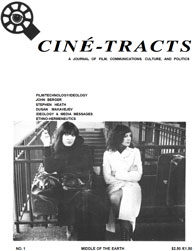Dilemmas of Learning and Teaching
 Thursday, October 6, 2005 at 4:01PM
Thursday, October 6, 2005 at 4:01PM In an essay written in 1982, Shoshana Felman described some paradoxical statements made by Socrates and Freud on education and learning. In the context of a discussion on pedagogy, they both talked at different times about the "radical impossibility of teaching." (Felman, 1982: 21) I would like to argue, in some agreement with Felman’s conclusions, that a recognition of the "impossibility" of teaching, enables and encourages the development of new and innovative approaches to pedagogy and learning. (Most of the discussion which follows deals with undergraduate education.) I will also link my discussion of teaching and learning with some comments on the creation of technologically mediated environments for education. My ultimate goal is to enrich the debate on technology and learning by linking innovation in education with the history and theory of classroom practice.
At the root of the claim about the impossibility of teaching is my feeling that learning never progresses along a "simple one-way road from ignorance to knowledge." (Felman, 1982: 27) In addition, teachers cannot fully anticipate the outcome of the processes of communication and interaction with their students unless the learning process is framed by a set of very narrow concerns. The balance between where students have come from and where they are headed is rarely linear and is often not clear. There is a legitimate desire on the part of teachers to structure ideas and values, as well as knowledge and content, for the purposes of presentation and discussion. What must be recognised is the role of "desire" in communication and teaching, as well as the gap between what teachers know and how well they have come to grips with what they don’t know. This profoundly affects the teacher’s capacity to create a site of learning for students. The same problems and potential solutions apply to learners.
As Felman herself suggests, "Ignorance is thus no longer simply opposed to knowledge: it is itself a radical condition, an integral part of the very structure of knowledge." (Felman, 1982: 29) For Freud, and for Socrates, knowledge is only gained through struggle and as a result of the recognition that ideas have an impact because of the dynamic interplay of words and spoken language, interpersonal communications and public discourse. It is their recognition of the importance of speech and of the balancing act between knowing and not knowing that opens up new possibilities for discussion and learning.
Ignorance is about resistance. It is about the desire to think and act in certain ways, most of which are rooted in a conscious refusal to engage with processes of inner reflection. The problem is that some pedagogical strategies try to anticipate what students need to know, as if teachers have already solved their own contradictory relationship with learning. The result is that teachers create (if not imagine) an ideal student and then make judgements about the students who are unable to attain the standards set by their instructional methods. If there is to be some equality of exchange here, then the teacher has to be learning nearly all of the time. This can then set the stage for some linkage and visibility between the foundational assumptions of the instructor and her own past, as well as her own history of learning. This may then return the teacher to a closer understanding of what it means to be a student.
The underlying presumption of most teachers is that students need to learn. There is a moral imperative to this assumption that is often linked to the overall values of a society, even if those values are themselves the site of intense struggle. Ironically, as the age of students at the undergraduate level increases, the question of who knows what drives teachers into using more and more specialised knowledge constructs.
The difficulty is that the need to learn cannot be understood in isolation from actual classroom practice. And the classroom is not necessarily a site of communication and exchange. The more specialised the teacher is, the more likely that the teaching will orient itself towards a power relationship that is results-oriented. But why should students learn in the first place? It seems almost heretical to ask that question. I ask it in the context of institutionalised forms of education that are driven by a complex set of motives, where the student is often not the primary focus. The culture of education has bred a tree of contradictions. Many of the supposed beneficiaries of the educational experience participate because they have to, not because they want to. This combination of resistance and acquiescence is framed by an increasingly complex system of assessment and evaluation. In order to fill the obvious gaps here, institutions rely on survey strategies to find out what is working and what isn’t. If the students are ambivalent about their learning experiences, their capacity, even their need to respond to survey-type questions, will be influenced by a set of impulses that are unlikely to appear in the results. This only further amplifies the difficulties in getting to know what students know.



